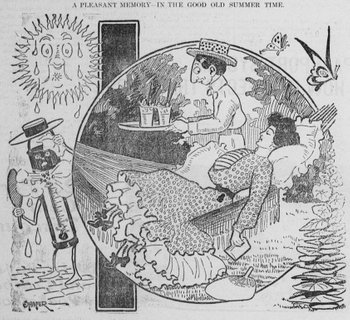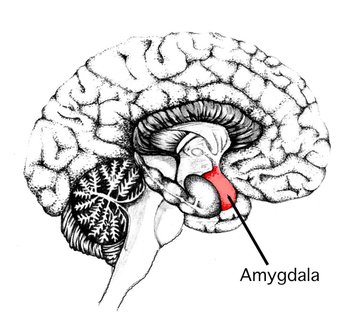Remembering the PAST.

Unlocking the secrets to our memories has baffled psychologists and neuroscientists for centuries. "How do we form memories? What are our earliest memories? When do we begin to form memories? Can we erase our memories? What is the purpose of our memories?" are some of the questions we ask even today. We do not have all the answers yet. But, as technology develops, we begin to understand some mechanisms behind these memory formations.

Amygdala, which is located in the limbic system is the most well-known part of the brain that activates during our emotional experiences. It activates when we experience range of emotions such as anger, fear, sad, happy, etc. On the other hand, if the amygdala is damaged, experiencing (and identifying) emotions to a certain extend will be impaired (Adolphs & Tranel 2003). Interestingly however, not only experiencing emotions, amygdala also play a role in recalling these specific emotional memories.
Canli and his colleagues in year 2000 published a paper in journal of neuroscience on how amygdala play a role in the memory formation (or recall). They showed participants 96 different scenes that varied in its emotional intensities. These scenes were taken from the International Affective Picture System (IAPS). Depending on the emotional intensities they experienced when viewing these images, participants pressed a button indicating their level emotional intensity: 0 = no emotional intensity, 3 = high emotional intensity. Participants brain activity was recorded using a functional magnetic resonance imaging (fMRI) during the task. 3 weeks later the original experiment, these participants were given a memory test to see how well they remembered the images. The results they found were highly interesting.
Participants who rated those images as highly intense showed a high amygdala activity corresponding to those images. However, high intensity did not always correlate with the high amygdala activity.
3 weeks later during the memory recall test, what they found was that participants recalled scenes (which were shown to them during the experiment) better that those correlated with higher amygdala activity compared to the scenes those showed lesser amygdala activity. Though for some scenes, those they responded as highly emotionally intense, but only elicit little amygdala activity, these scenes were less remembered by the participants.
So, amygdala plays a role in remembering our memories, whether we recall these events easily or are being forgotten for various reasons. Although there are many limitations, and issues in Canli et al study with low ecological validity, it is interesting to see how this emotional part of the brain play a role in recalling past events. Interestingly, studies conducted with patients who had lesions in their amygdala also showed impairment in memory retrieval, which can be used to support Canli and his colleagues study as well (Fine & Blair, 2000; James et al., 1975).
References
C. Fine & R. J. R. Blair - The cognitive and emotional effects of amygdala damage - Neurocase Vol. 6 , Iss. 6,2000
James A. Horel, E. Gregory Keating, Louis J. Misantone, Partial Klu¨ver-Bucy syndrome produced by destroying temporal neocortex or amygdala, Brain Research, Volume 94, Issue 2, 29 August 1975, Pages 347-359, ISSN 0006-8993, 10.1016/0006-8993(75)90067-0.
Adolphs R1, Tranel D. - Amygdala damage impairs emotion recognition from scenes only when they contain facial expressions. - Neuropsychologia. 2003;41(10):1281-9.
Canli, Zhao, Brewer, Gabrieli, Cahill. 2000, Event- Related Activation In the Human Amygdala Associates with Later Memory for Individual Emotional Experience. J Neurosci. 2000 Oct 1;20(19):RC99.

@originalworks
Downvoting a post can decrease pending rewards and make it less visible. Common reasons:
Submit
The @OriginalWorks bot has determined this post by @hpwa to be original material and upvoted it!
To call @OriginalWorks, simply reply to any post with @originalworks or !originalworks in your message!
There is a sponsored @OriginalWorks contest currently running with a 125 SBD prize pool!
For more information, Click Here!
Special thanks to @reggaemuffin for being a supporter! Vote him as a witness to help make Steemit a better place!
Downvoting a post can decrease pending rewards and make it less visible. Common reasons:
Submit